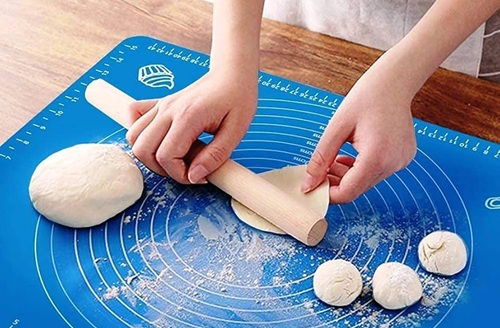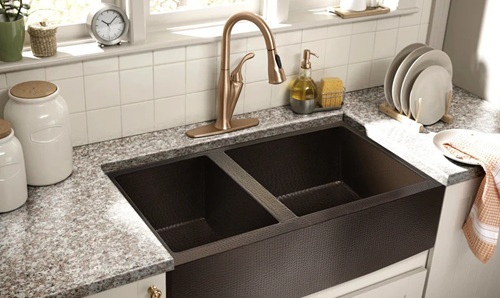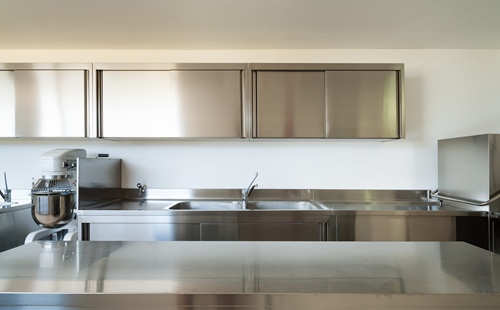In the realm of modern baking, silicone baking mats have earned a loyal following among home cooks and professional chefs alike. Sleek, reusable, and easy to clean, these mats offer an eco-friendly and efficient alternative to parchment paper and greased trays. But like any kitchen tool, silicone mats come with both advantages and potential drawbacks.
Lets take a detailed look at the pros and cons of silicone baking mats, helping you make an informed decision on whether this trending tool deserves a permanent place in your kitchen.
![]()
What Are Silicone Baking Mats?
A silicone baking mat is a nonstick sheet typically made from food-grade silicone reinforced with fiberglass mesh. Designed to fit standard baking trays, these mats are used in place of parchment paper or oil to prevent baked goods from sticking to the pan.
They’re commonly used for:
- Cookies and pastries
- Roasting vegetables
- Working with sticky doughs or candies
- Rolling or kneading dough
Popular brands like Silpat, Kitzini, and AmazonBasics offer mats in various sizes and colors, often marked with circles or measurement guides for added convenience.
Pros of Silicone Baking Mats
1. Reusable and Eco-Friendly
Silicone baking mats are designed for repeated use, often lasting for hundreds to thousands of baking cycles. Unlike parchment paper or aluminum foil, which are single-use and contribute to kitchen waste, silicone mats drastically reduce your carbon footprint over time.
Fact: One mat can replace over 3,000 sheets of parchment paper—a significant eco- and budget-friendly choice.
2. Superior Nonstick Surface
Silicone mats offer an exceptionally nonstick surface, making them ideal for delicate cookies, brittle candies, sticky buns, and roasted veggies. No greasing or spraying is necessary, and food effortlessly slides off the mat.
Bonus: Great for working with sticky substances like caramel, cheese, or sugary syrups.
3. Easy to Clean
Thanks to their slick surface, silicone mats are incredibly easy to clean. Most are dishwasher safe, or you can hand-wash them with warm soapy water. No scrubbing or soaking required.
Cleaning Tip: To remove oily residue, use a baking soda paste or lemon juice and gently scrub with a soft sponge.
4. Promotes Even Baking
Silicone baking mats contain a fiberglass mesh core, which helps distribute heat evenly across the surface. This minimizes the risk of hot spots and ensures uniform browning—particularly helpful for cookies and pastries.
Pro Insight: Place the mat on a heavy-duty baking sheet to ensure maximum heat circulation and structure.
5. Multi-Purpose Utility
Beyond the oven, silicone mats are versatile in many culinary tasks, including:
- Rolling dough or fondant
- Kneading bread or pizza dough
- Freezing fruits or chocolate
- Lining trays for candy making
- Using as a work surface for sticky or wet ingredients
Some mats come printed with measuring grids, circle templates, or rulers—excellent for precision baking.
6. Temperature Resistant and Safe
High-quality silicone mats are oven safe up to 480°F (250°C) and can also be used in the freezer (down to -40°F/-40°C). Food-grade silicone is non-toxic, BPA-free, and FDA-approved when purchased from reputable brands.
Safety Note: Always check the maximum temperature rating on your specific mat before using it in high-heat applications.
Cons of Silicone Baking Mats
1. Initial Cost
While silicone mats save money in the long run, they do require a higher upfront investment. A single mat typically costs ₹800–₹1,800 ($10–$25), and sets of two or more can range higher.
Tip: If you bake infrequently, the cost may outweigh the convenience.
2. Not Suitable for Broiling or Open Flames
Silicone mats are not designed for broiling, grilling, or direct exposure to flames. At extremely high temperatures (above their rated limit), the silicone may degrade or release unpleasant odors.
Warning: Never place a silicone mat under a broiler or on the bottom of an oven.
3. Staining and Odor Retention
Some mats may retain stains or strong odors over time—especially when exposed to foods with strong spices, oils, or sauces (like turmeric or garlic).
Cleaning Tip: Periodically soak the mat in vinegar or lemon water to neutralize odors.
4. Takes Up Storage Space
Silicone mats are thicker and more rigid than parchment paper, so they can’t be folded easily. You’ll need to roll or lay them flat, which may pose a challenge in compact kitchens.
5. Limited Size Flexibility
Most mats are made to fit standard-size sheet pans, so if your tray is smaller or irregular, the mat may bunch up or hang over the edge, affecting airflow and baking results.
Workaround: Trim to size (if allowed by the manufacturer) or look for mats in multiple sizes.
6. Can Affect Crispiness
Because silicone is slightly insulated, it may limit browning and crisping on the underside of baked goods compared to bare metal pans or parchment. For items like thin-crust pizzas, tarts, or roasted potatoes, you may prefer a crispier result from direct metal contact.
Silicone Mats vs. Parchment Paper
| Feature | Silicone Baking Mat | Parchment Paper |
| Reusability | ✅ 100s of uses | ❌ Single-use |
| Nonstick Performance | ✅ Excellent | ✅ Excellent |
| Price (Per Use) | ✅ Very low (long-term) | ❌ Higher (recurring) |
| Crispy Results | ⚠️ May be reduced | ✅ Excellent |
| Broiler Safe | ❌ No | ⚠️ Some types up to 450°F |
| Cleaning Required | ✅ Yes | ❌ Discard after use |
| Eco-Friendliness | ✅ Reusable, low waste | ⚠️ Compostable options |
| Storage Convenience | ⚠️ Needs space/rolling | ✅ Easy to store |
Should You Use Silicone Baking Mats?
Best For:
- Frequent bakers who want a reusable, eco-friendly solution
- Those working with sticky, sugary, or delicate foods
- Cooks looking to simplify cleanup and reduce waste
- Bakers who value precision and even heat distribution
Not Ideal If:
- You bake infrequently or prefer zero cleaning
- You regularly broil, grill, or roast at high heat
- You need extremely crispy or browned results
- You have limited kitchen storage space
Final Verdict
Silicone baking mats offer an excellent blend of convenience, sustainability, and performance. Their reusability, nonstick surface, and even heating make them an indispensable tool for serious bakers and everyday cooks alike. While they’re not perfect for every situation—particularly for high-heat or crisp-finish baking—they more than make up for it in longevity and versatility.
If you’re building a smart, sustainable, and efficient kitchen, silicone baking mats are a worthy investment that can save time, money, and mess in the long run.


